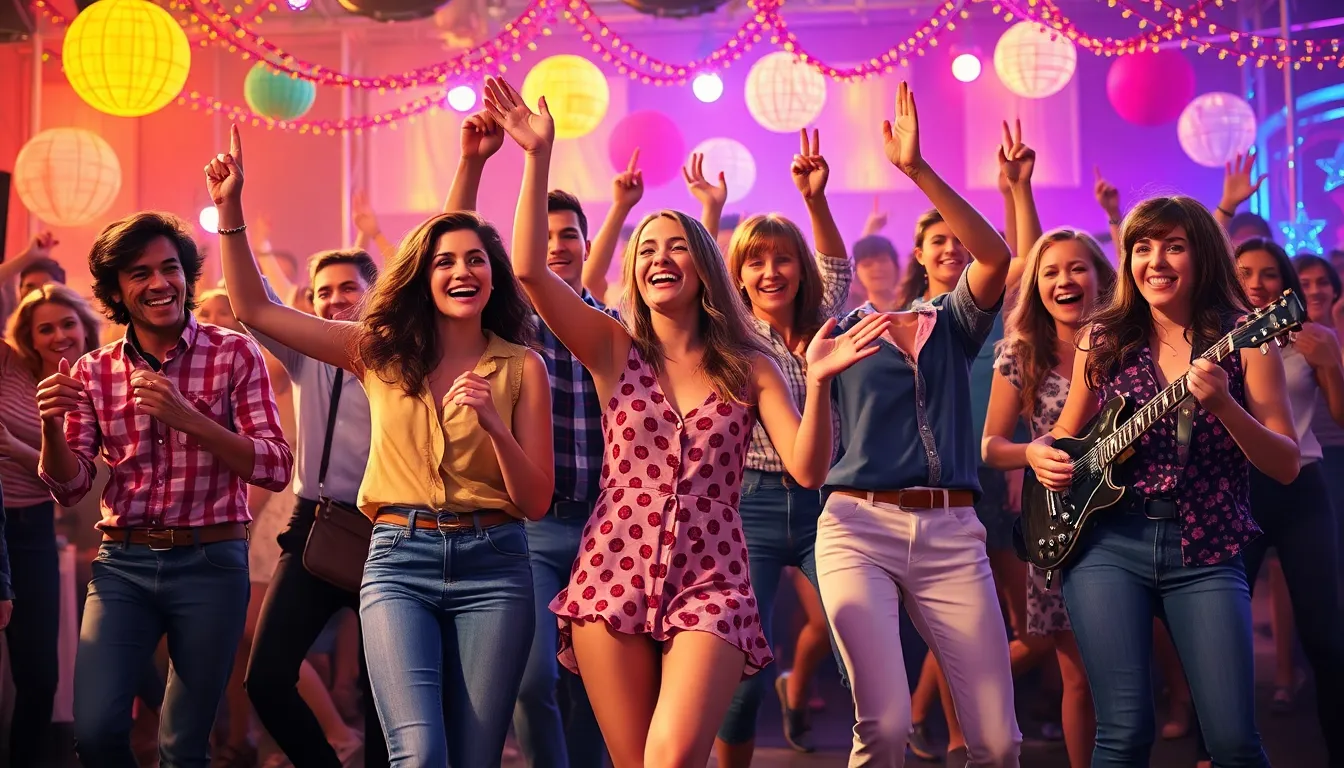Cultural trends shape the world around us, often in ways that leave us scratching our heads or laughing out loud. From viral TikTok dances to the latest fashion statements that seem to defy logic, these trends reflect society’s ever-changing values and interests. It’s as if everyone collectively decided that wearing socks with sandals is the new cool—who knew?
cultural trends examples
Cultural trends represent the evolving values and behaviors within society. These trends manifest in various forms, reflecting the interests and priorities of different demographics. Viral TikTok dances highlight how digital platforms facilitate rapid cultural exchange. Users often embrace these dances, reshaping social interactions and entertainment.
Unconventional fashion choices also illustrate shifting norms. Wearing socks with sandals may seem humorous, yet it signifies a break from traditional dress codes. People increasingly prioritize comfort over societal expectations in their clothing.
Social justice movements gain traction, influencing public discourse. Activism through art, music, and literature showcases collective responses to societal issues. Environmental consciousness permeates consumer behavior, with individuals opting for sustainable products. Brands that adopt eco-friendly practices appeal to a growing audience concerned with the planet’s health.
Nostalgia plays a critical role in shaping cultural trends, as older styles and references re-emerge. Fashion and music often revisit past decades, creating a sense of familiarity and connection among different age groups. Increased access to global media fosters a blend of cultural influences. Fusion cuisines and mixed genre music reflect the diverse backgrounds of populations.
Technology impacts cultural trends as well. Streaming platforms revolutionize how audiences consume content, shaping preferences and habits. Engaging with multimedia formats enhances experiences and promotes cultural exchange.
These examples highlight the dynamic nature of cultural trends and their ability to illustrate the collective zeitgeist. Each trend contributes uniquely to the fabric of society, informed by shared experiences and evolving contexts.
Historical Cultural Trends

Cultural trends throughout history provide insight into society’s evolving values and behaviors. They reflect the interests of diverse demographics and influence daily life in profound ways.
Examples From The 20th Century
The 20th century introduced numerous cultural trends that shaped modern society. The emergence of rock and roll in the 1950s revolutionized music and youth culture, promoting themes of rebellion and freedom. The counterculture movement in the 1960s embraced anti-establishment ideas, influencing fashion and art. The rise of television reshaped entertainment consumption, creating shared cultural moments like the moon landing in 1969. Feminism gained momentum with the women’s liberation movement, reshaping gender roles and expectations. These examples highlight how trends defined identities and brought collective shifts in societal norms.
Influences Of Technology
Technology has played a critical role in cultural trend development. The invention of the internet enabled rapid information exchange, creating global communities. Social media platforms, particularly in the 21st century, have amplified trends, facilitating the spread of memes and viral challenges. Smartphones have altered communication styles, promoting instant connectivity and influencing cultural dialogue. Streaming services transformed content consumption, allowing access to diverse programming that transcends geographic boundaries. Such technological advancements continually shape societal behaviors, preferences, and expressions.
Contemporary Cultural Trends
Cultural trends continuously shape society. They reflect current values and behaviors across diverse demographics.
Social Media Impact
Social media profoundly influences cultural trends. Platforms like TikTok and Instagram accelerate the popularity of viral challenges and memes. Young users often drive this exchange, creating new forms of expression through digital content. Influencers play a crucial role, shaping consumer preferences and trends. The accessibility of content allows for seamless sharing and amplification. Cultural phenomena can spread globally within hours. Many brands leverage social media to engage audiences and promote their products. Social media also facilitates discussions around societal issues, further blurring the lines between cultural influence and activism.
Sustainability and Eco-Consciousness
Sustainability emerges as a defining cultural trend. Increasingly, consumers prioritize eco-friendly products and practices. Brands that embrace sustainability often gain loyalty from environmentally conscious audiences. The shift towards ethical consumption underscores changing values within society. Recycling initiatives and sustainable fashion choices illustrate this commitment. Many people seek transparency regarding product sourcing and environmental impact. Younger generations place greater importance on brands that advocate for the planet. As a result, cultural movements advocating for sustainability gain momentum, highlighting a collective desire for a healthier world.
Emerging Cultural Trends
Cultural trends continue to shift, influenced by technology and societal changes. Two prominent trends today are virtual reality in gaming and the focus on diversity and inclusion.
Virtual Reality and Gaming
Virtual reality (VR) transforms gaming by immersing players in new digital worlds. Gamers feel more engaged as they interact with environments and experience narratives like never before. Developers harness VR technology to create realistic simulations that enhance gameplay and storytelling. Social experiences in gaming communities grow, with players sharing their adventures online. As hardware becomes more accessible, interest in VR gaming rises, shaping future entertainment landscapes.
Diversity and Inclusion
Diversity and inclusion are now central to cultural conversations. Many brands actively promote diverse representation in marketing and product offerings. Representation spans various demographics, including race, gender, and sexual orientation, as audiences demand authenticity. Companies that prioritize inclusion resonate with consumers, driving loyalty and engagement. Initiatives that support underrepresented voices contribute to a richer cultural narrative, reflecting society’s evolving values. Consumers increasingly seek brands aligned with their principles, making diversity and inclusion vital for success.
Conclusion
Cultural trends are a mirror reflecting society’s evolving values and behaviors. They showcase how people adapt to changes in technology, fashion, and social movements. From viral TikTok dances to the rise of sustainable consumerism, these trends reveal the collective consciousness shaping modern life.
As society continues to evolve, embracing diversity and inclusion will likely remain at the forefront of cultural conversations. The interplay between technology and cultural expression will further influence how individuals connect and engage. Understanding these trends not only provides insight into current societal dynamics but also highlights the ongoing transformation of cultural identity.




